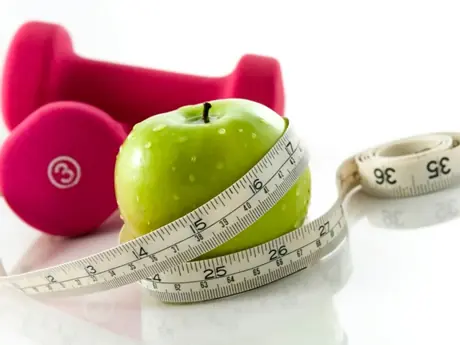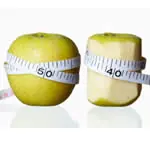
The diet is all about buying foods you can prepare and eat fast. There are thousands of choices that allow you to create and build your very own daily menus using frozen foods (including organic options), ready-to-eat foods (e.g., soups, cereals, canned foods, fresh fruits and vegetables) and other foods that are available at the local supermarket, casual dining restaurants, fast-food chains—even the local convenience store.
The best part? It's simple and requires virtually no cooking.
I can already hear the chatter from nutrition and health critics. "How can you recommend eating frozen foods? Canned soups? Fast foods? Oh my gosh! You have a Ph.D. in public health and this is what you're advising people to do?"
Point well taken. This is not a "grow your own organic garden, milk your own cow, raise your own chickens" type of diet. That's for sure.
The foods you'll find in The Diet Detective's All-American Diet are stepping-stones. You may not be able to go to the farmers market on a daily basis and pick up organic produce. However, with this diet you can lose weight, get more interested in fitness, gradually change your eating habits, and start living a brand new life. Also, there is plenty of strong research supporting this type of diet.
For example, an article in the journal Obesity Research states that "Consumption of portion-controlled entr?es resulted in greater losses of weight and fat, thereby reducing cardiovascular disease risk. Accurate portion control is an important factor in weight-loss success, and use of packaged entr?es is an effective method of achieving this."
Another study in The Journal of the American Dietetic Association says, "Research shows that single-serving packages may help reduce energy intake at breakfast."
Finally, an article in Diabetes, Obesity and Metabolism concludes that, "Our data suggest that the meal replacement diet plan evaluated was an effective strategy for producing robust initial weight loss and for achieving improvements in a number of health-related parameters during weight maintenance, including inflammation and oxidative stress, two key factors more recently shown to underlie our most common chronic diseases."
The plan I've laid out is a wonderful first step. If you follow it, you can lose weight. The question is: Can you follow it? The answer is "yes," because I've designed it specifically so that you won't feel hungry. And you won't have to rely on chance or your own judgment to make good decisions about what to eat. All you have to do is choose from a wonderful variety of familiar foods and follow the plan.
Here is a quick guide to starting this diet. Keep in mind, you should always check with your physician before starting any diet—especially since this diet can be high in sodium.
1. Make a solid commitment to stick to the plan.
Mark the date you'll begin on your calendar (and don't make it a month from now).
2. Start with your 21-day jump-start program.
Women should use the 1,200-calorie Build-a-Meal plan, and men should stick to the 1,600-calorie Build-a-Meal plan. Abiding by these plans should result in the reasonable weight loss that can help give you the confidence and motivation you need to continue. After this "initiation" period, you'll move on and figure out your daily calorie needs.
3. Go to the supermarket.
Choose and experiment. All you have to do is get off the couch and take an extra half-hour or so to check out the frozen food, soup, cereal and other packaged food sections. Your research pays off in the end, and that half-hour translates into time, calories and money saved. It's more than worth the effort.
Many times, frozen foods and other supermarket packaged foods are also cheaper than the prepackaged foods offered by commercial programs such as Jenny Craig or Nutrisystem (plus, they're available at any grocery store).
On your first visit to the supermarket, look at nutrition labels. Pick a variety of healthy entrees and dinners (e.g., Amy's, Healthy Choice, Lean Cuisine, Smart Ones, Campbell's, etc.) that appeal to your tastes and provide a satisfying portion. If a frozen meal tastes great but you need three of them to fill you up and feel satisfied, it's not the one for you.
My recommendation is to make an initial one-time investment of about $55 to taste-test 20 entrees. The choices are endless, ranging from Indian to Italian, Mexican to vegetarian, and chicken to meat platters—all of which can add a little spice to your daily diet. Also, test the soups and other packaged foods. You just have to decide which ones you'll enjoy and can see yourself continuing to eat in the long run.
- 1
- of
- 2







Discuss This Article